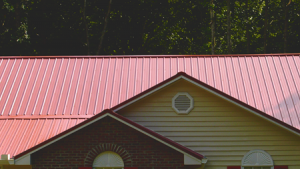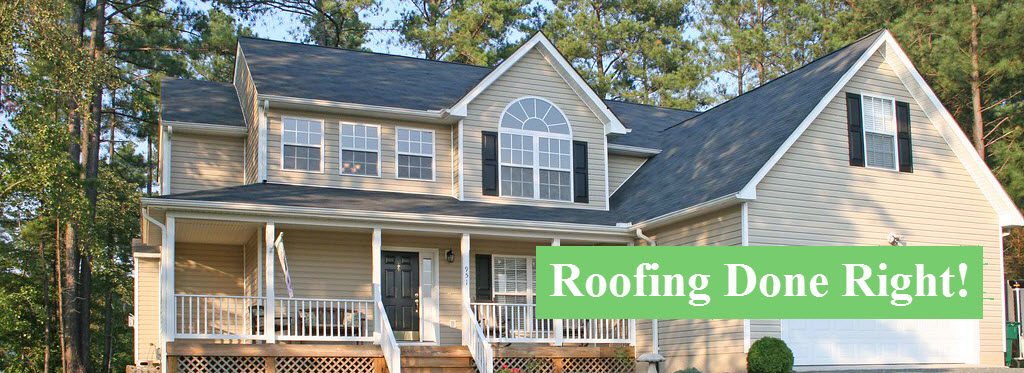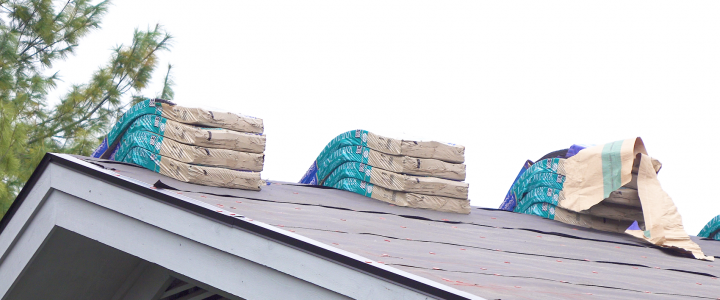When choosing roof shingles or tiles or metal panels for your roof it might seem that you have a boundless selection of material on the marketplace: asphalt, composite, steel, wood shake, rubber, and MSR rolled roof coverings. Many people think that the selection is purely an aesthetic or economic one– that you select a roofing material totally according to what you like or what you can manage financially.
Not so. Lots of elements determine which roofing products you can utilize, as well as one make-or-break element, the incline of the roof, called roofing pitch. For instance, you might consider timeless composite shingles on your roof, however if the pitch is below a particular ratio, you may be required to set up a various sort of roofing– perhaps rolled roof or standing seam-metal roof covering.
Roofing Pitch – What It Is And How It Affects The Roofing Materials You Use
Pitch is the term used to define the angle, slope, or slant of your roof. Roofing system pitch classifications consist of 2 numbers indicating a proportion. The ratio can be shown by a division lower separating the numbers, such as 2/12 or 7/12. Or, the colon can change the slash, as in 2:12 or 7:12. In any case, the notation assigns a proportion in between two measurements of the roofing system– a numerator as well as denominator.
Numerator: The numerator, or very first number, describes the vertical (height) measurement of the roofing system.
Denominator: The common denominator, or 2nd number, denotes the straight (length) measurement of the roofing system. To make things a little bit easier, for roofing purposes the common denominator is constantly 12. Even though standard math tells us that 12/12 can be decreased to 1/1, this is not done with a roof covering pitch. The denominator continues to be 12.
Exactly How to Determine The Pitch of a Roof
Simply put, the pitch of a roof is just a ratio that suggests just how much angle there is in the roof over a 12 foot horizontal range.
Here are some examples:
5/12: For each 12 horizontal feet, the roofing system changes 5 feet in vertical height.
8/12: For every 12 straight feet, the roof adjustments 8 feet in vertical elevation.
For most home designs, roofing system pitches fall in a variety 4/12 (a moderate) slope up to 8/12 (relatively high). Instances of extreme slopes vary from 1/4/ 12 (practically flat) to 12/12 (sloping down at a best 45-degree angle).
Low and High Pitch Instances
2 examples at each end of the range:
Low-pitched: It was trendy for modern-style houses built in the 1960s to have little pitch, just a barely negligible incline to aid drain water. Visually, this roof appears flat. This pitch might be as reduced as 1/12.
High-pitched: Roofs on Victorian-era homes were typically greatly angled with a steep pitch. Think of a classic Adams Family haunted residence with its soaring peaks and you have a picture of a piercing roof covering. This is one of the rare pitches where the numerator is greater than the denominator, with an incline as high as 18/12.
.25/ 12 to 3/12 Roofing Pitches
Roofing system pitches with reduced angles, such as 1/12 up to 3/12 are located in modern style homes as well as in industrial structures. The level roofing products most appropriate for these shallow-sloped roof coverings include:
Built-up roofing: Sometimes called tar-and-gravel, or BUR, the modern kind of this sort of roofing system includes rotating layers of asphalt as well as strengthening materials.
” Torch-down” roofing: This is a single layer membrane-style roofing product that is heat-activated by a torch throughout installment.
Rubber membrane: EPDM (brief for ethylene propylene diene monomer) is a real rubber that can be applied to a roofing system with glue or mechanical supports.
 Standing seam metal: These roofs are made from panels of aluminum or steel collaborated in raised joints. They can be made use of on roofing systems with pitches as reduced as.25/ 12. They are additionally made use of on much steeper roof coverings.
Standing seam metal: These roofs are made from panels of aluminum or steel collaborated in raised joints. They can be made use of on roofing systems with pitches as reduced as.25/ 12. They are additionally made use of on much steeper roof coverings.
2.5/ 12 to 19/12 Pitches
Clay or cement floor tiles can be made use of on a vast array of roof covering pitches. For pitches of 2.5/ 12 up to 4/12, the roof calls for double underlayment. Inclines over 19/12 are not suggested given that tiles on very steep roof coverings can rattle.
4/12 to 20/12 Pitches
A terrific amount of residential roof coverings fall into this classification. The roof products frequently utilized for these pitches consist of asphalt (compound) shingles: Conventional 3-tab shingles made with asphalt composite are the most prominent sort of roof shingles as well as are the most versatile in terms of adapting to many roof pitches. These roof shingles are appropriate for pitches as reduced as 4/12 pitch, all the way as much as a 12/12 pitch. Consider them as taking the center road in terms of roof pitch– not as level, but also not steep.
5/12 to 12/12 Pitch
Wood as well as slate shingles are made use of in much of the same kinds of roofing as asphalt composite tiles, yet might not be appropriate for roofing systems near the lower end, considering that they are a lot more at risk to dripping. Wood and slate tiles do not secure together as tightly as other kinds of tiles.
A Quick Look At Some Roofing Materials
The majority of roof covering materials have actually an advised pitch variety for which they are most appropriate. Adhering to the suggestions is not mandatory; however you should not go below the recommendation. As an example, timber and slate tiles may work for roofing steeper than the leading suggestion of 12/12, however you ought to not install them listed below the 4/12 reduced variety.
Clay or cement floor tiles: 2.5/ 12 to 19/12
Asphalt (composite) shingles: 4/12 to 20/12
Wood and slate tiles: 5/12 to 12/12
Built-Up (BUR):.25/ 12 to 3/12
Rubber membrane:.25/ 12 to 3/12
Standing-seam steel: 1/12 to 19/12


